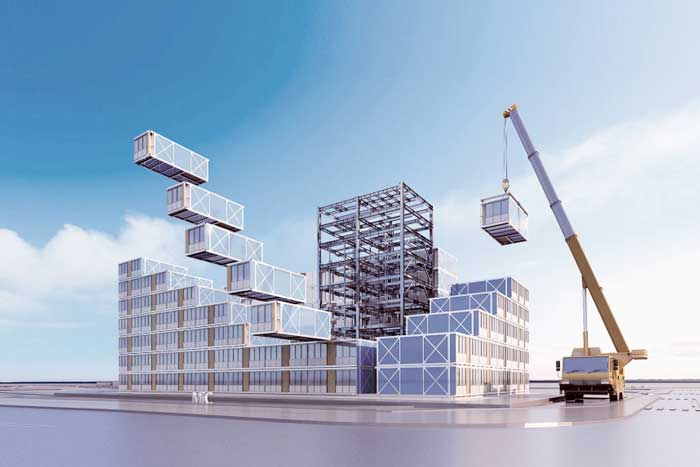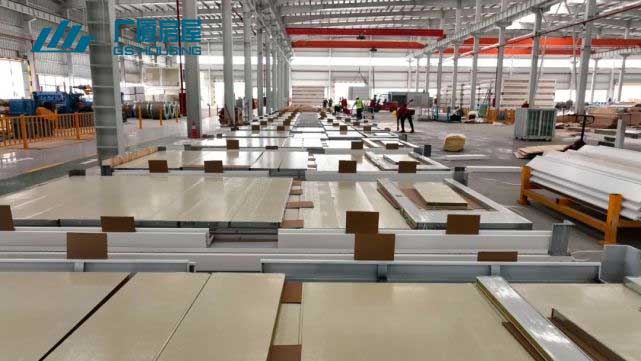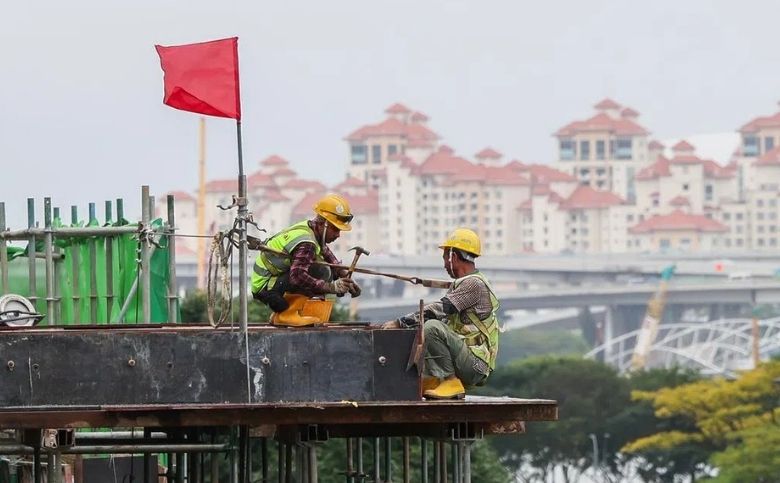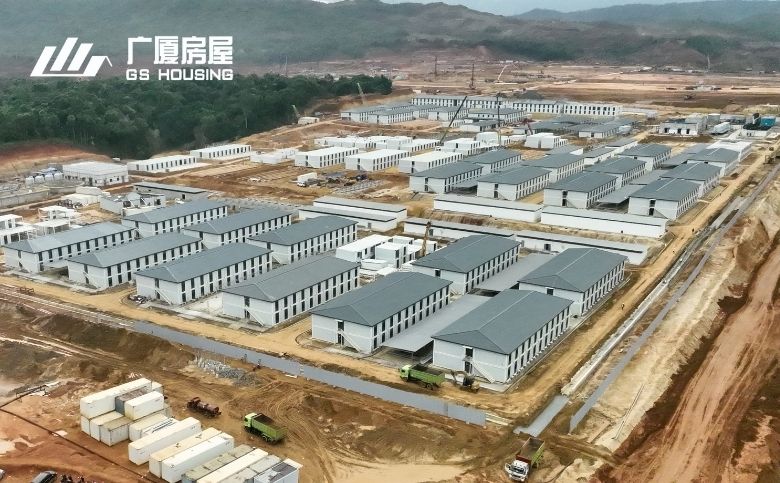Why choose a porta cabin as your construction site labour camp?
1. Why workers don’t want to work on construction sites?
Very hard on the body: Construction work is very hard on the body. It requires heavy lifting, doing the same thing over and over, standing for long periods of time, and working in uncomfortable positions. Over time, this puts workers at a high risk of chronic pain, joint problems, and injuries.
Construction sites are dangerous by nature, which means there is a risk of injury. Workers are at risk of falling from heights, getting electrocuted, being hit by heavy equipment or falling objects, and having accidents with power tools. Even though there are strict safety rules, it is still one of the most dangerous jobs.
Exposure to the Weather: Construction work is often done outside in all kinds of weather, including extreme heat, cold, rain, and wind. This is different from most office jobs. This can be awful, bad for your health, and add more physical stress.
A lot of people, especially younger ones, would rather work in climate-controlled offices or the tech industry because they think those jobs are cleaner, safer, and less physically demanding.
2. What is it like living in construction worker dormitories built from flat packed containers?
GS Housing modular camps offer a significant improvement over traditional temporary building camps, providing workers with a safe, comfortable, and fully functional "home."
Privacy: In most cases, each worker has their own lockable mobile room or shares space with others. This ensures privacy while allowing them to maintain their own space.
Infrastructure: The prefabricated dormitories are equipped with all necessary items, such as modular bathrooms, container toilets, mobile laundries, prefabricated dining halls, and recreational areas.
Safety and Community: Modular camps provide a sense of security. Living with colleagues fosters a sense of community and team cohesion.
Productivity Boost: By providing a restful and comfortable environment, workers are better rested, healthier, and more focused on the job, reducing turnover and absenteeism.
3. How to save labor in construction projects?
One of the best strategies to cut labor costs is to use prefabricated construction.
Labor cost savings: Shifting labor from on-site installation to efficient factories can reduce labor costs by up to 70%.
Shortened on-site construction time: Prefabricated buildings require only 30% of the on-site assembly workload of traditional construction.
Standardized design: Module units are manufactured in advanced production workshops according to pre-designed plans, enabling workers to quickly and easily produce high-quality homes.
Reducing weather delays: Moving work indoors avoids downtime and the additional safety measures required for outdoor work in rainy, hot, or snowy conditions.

4. How are portable camps constructed so quickly?
The faster building of modular site accommodation camps comes from a change from "construction" to "assembly."GS Housing Group's detachable building process is very important:
Step 1: Make sure the factory makes things correctly.
In a controlled factory setting, all of the main parts of a building, like the floors, walls, and roofs, are made ahead of time. Before they are sent out, doors, windows, plumbing, wiring, and even the inside finishes are all done. This makes sure that each part is correct and of high quality.
Step 2: Pack and ship things on a regular basis.
A plan for packaging and shipping is made and carried out ahead of time based on the needs of the project. This not only makes the most of shipping space, but it also saves money.
After the on-site foundation is ready, a crane is used to raise the modular housing units into place.In a few hours or even days, a completely functional home can be constructed.
We can turn complicated construction projects into process-based industrial production and on-site assembly, which makes the project's timeline and quality much less affected by things like staff expertise and weather. This is what gives GS Housing the most competitive edge.
5. What are the advantages of construction modular camps?
A. Unparalleled Efficiency and Speed
Simultaneous Construction: Container Worker camp modules are factory-fabricated alongside project site preparation, including foundation and landform work. This reduces project construction time by 50% to 70%.
Rapid Deployment: Upon arrival at the construction site, the modules can be assembled quickly, like a carefully designed "Lego" puzzle. In a few weeks, a full labour porta camp with food, fun things to do, and places to sleep will be open. This helps workers get used to the area and start working faster, which makes the whole project's schedule go faster.
B. Excellent cost control
Reduce labor costs: Factories have higher production efficiency, require less on-site labor time, and are not affected by weather delays.
Reduce waste and theft: In a controlled factory environment, materials are purchased in bulk and precisely cut, reducing waste by up to 90%.It also gets rid of the money lost due to damage caused by bad weather.
Budget certainty: The factory's modular buildings keep the costs of the temporary mobile camps predictable, which protects the project's budget from the cost overruns that happen often with traditional buildings.
C. High quality and long-lasting; an environment that is under control: Factory-based production keeps things like rain, wind, dust, and temperature changes from affecting the quality of a construction site.
Strict Compliance: Modular units are built to meet building codes, and they can be made to fit certain situations, like areas with strong winds, earthquakes, or very hot or cold weather. This makes sure that the living space is safe and long-lasting.
Better living conditions for employees
Better health for employees: These man camp housing give workers a clean, private, and comfortable home with the right insulation, HVAC systems, and modern conveniences. This is better than other temporary container camps.
Higher employee productivity and retention: Offering high-quality modular housing is a great way to attract and keep skilled workers, which cuts down on costly employee turnover.
Safer Building: Moving most of the construction work to the factory floor greatly lowers the risk of accidents happening on site during the building of the portable camp.
E. Flexibility and Sustainability
Scalability: the site camps can be easily expanded or reconfigured according to the demands of different projects.
Removable and Reusable: After the project concludes, the worker camps can be disassembled, transported, and reused at a new location. This will make it a long-term asset rather than a one-time expense.
Environmental protection: The precision manufacturing process generates much less waste. Compared with the construction and demolition of temporary sites, the reuse of steel structures significantly reduces the environmental footprint.
F. Strategic advantages of project management
Rapid project initiation: By quickly resolving the accommodation issue for workers, the delivery date of the main building can be avoided from being delayed.
Advantages of application in remote areas: The mobile modular camp can be set up within one month, providing a foundation for the work of projects in remote areas such as mining.
Better corporate image: By using modern, easy-to-use camps, a company shows that it cares about its employees' health and well-being, which improves its reputation with clients, investors, and the local community.
In short, building modular camps is more than just providing worker accommodation. They are a strategic tool that can increase speed, save costs, control quality, and significantly improve worker well-being and productivity. For companies undertaking large-scale projects, modular accommodation camps are a wise investment.

6. Are factory-built “pre-fab building” the future of housing?
In the mining, energy, and infrastructure construction industries, prefab labour mess are without a doubt the best choice for now and in the future. It gives workers quick, comfortable, and easy-to-remove camps, and it also gives people who have been displaced during disaster relief efforts a place to stay. Pre fabricated shelter is irreplaceable in these scenarios.
For the broader permanent modular housing market, it represents a significant and growing trend. With challenges such as skilled labor shortages, housing affordability, and construction waste intensifying, prefabricated housing's energy-saving, environmentally friendly, consistent quality, rapid construction, reduced waste, and sustainable nature perfectly align with sustainable development needs, making it a strong contender for reshaping mass housing construction. While it may not completely replace the traditional luxury custom-built home market, it will increasingly occupy a larger share of the affordable housing, modular apartment buildings, and middle-class container type housing sectors.
7. Why don't many countries use temporary prefab buildings for their labour camp?
While temporary porta cabin are the gold standard for modular labor dormitories accommodation in many industries (like oil & gas, mining, and large-scale infrastructure projects in countries like China, Australia, and the Middle East), their adoption is indeed uneven globally.
Many countries have yet to fully utilize this prefabricated accommodation solution, not due to technical shortcomings but rather to a variety of economic, regulatory, cultural, and industry factors.
A. Economic Factors: High Initial Cost
High initial investment: High-quality, safe, and durable prefabricated chinchilla accommodation camps require higher upfront capital expenditures.For many developers or contractors with meager profits, they often tend to choose the lowest prefab houses with lower quality materials
The "lowest bidder" mentality: In the highly competitive construction market, contracts are often awarded to the lowest bidder. These bidders might cut corners on labor accommodation to save money.
They saw a lower price for a temporary shed but did not calculate the total cost of ownership. Although GS housing porta cabins for staff camp are relatively expensive at the beginning, they can save:
Speed: Faster installation means that workers can reach the site more quickly, accelerating the entire project.
Durability and maintenance: Higher-quality materials mean lower repair and replacement costs throughout the project's life cycle.
Relocation and reuse: Prefabricated camps can be disassembled and moved to the next project to amortize costs.
B. The rules and laws that govern: No temporary building code
Laws about work that aren't strong or aren't followed: Many nations fail to adequately delineate the minimum standards for workers' housing.
C. Industry Practices and Cultural Norms: "The Way It's Always Been Done"
Traditional Mindset: People in this culture prefer traditional, on-site building methods, even for short-term needs. People still think that prefabrication means something weak or low-quality.
Short-term profits: Many people who work on projects think that prefab engineering camp are only needed for a short time. They care more about saving money right away than the long-term benefits of modular camps.
Lack of knowledge: People who make decisions may not know about prefabricated house camp options like GS Housing.They might think that "prefab" means shipping containers that are hard to use.
D. Supply Chain Issues
Lack of Local Prefab Buildings: In some countries, a local prefabrication industry doesn't exist. Importing labour camps from another country adds logistical, tax costs.

Summarize
The core values of modern prefabricated construction technology, represented by GS Housing, lie in efficiency, quality, and humanistic care. It is not only an effective tool for responding to urgent needs and reducing construction costs, but also a vital force in promoting the industrialization and intelligent upgrading of the construction industry, ultimately creating a better living environment for people.
Post time: 25-09-25






